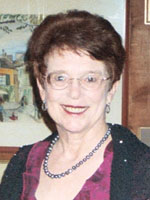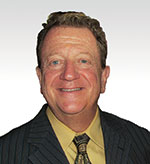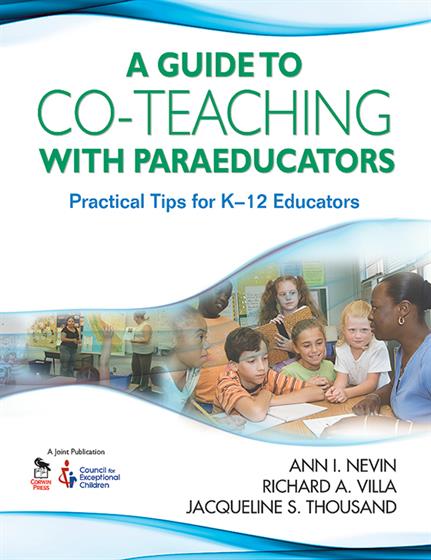
Hands-on, Practical Guidance for Educators
From math,
literacy, equity, multilingual learners, and SEL, to assessment, school counseling,
and education leadership, our books are research-based and authored by experts
on topics most relevant to what educators are facing today.
A Guide to Co-Teaching With Paraeducators
Learn how co-teaching relationships with paraeducators can improve outcomes for students with special needs, and find guidelines for successful teamwork and authentic case studies of working paraprofessionals.
- Grade Level: PreK-12, Elementary, Secondary
- ISBN: 9781412957649
- Published By: Corwin
- Year: 2008
- Page Count: 144
- Publication date: August 15, 2008
Price: $39.95
For Instructors
When you select 'request review copy', you will be redirected to Sage Publishing (our parent site) to process your request.
Description
"This book provides a valuable resource for the best utilization of paraeducators in the classroom, with tips and tools for making this a successful process."
—Melissa Miller, Science Teacher
Lynch Middle School, Farmington, AR
"Easy to read and understand, this book contains many examples, resources, and up-to-date information pertinent to the role of paraeducators."
—Mari Gates, Special Education Co-Teacher
Henry B. Burkland Intermediate School, Middleboro, MA
Learn how paraeducators can positively impact the achievement of students with special needs in the inclusive classroom!
Focused on the expanding role of paraeducators, this hands-on reference provides practical guidelines for collaborating with paraeducators to give students with special needs access to highly qualified instructors in the general education classroom and individualized attention that promotes learning for all students.
The authors outline a team approach bolstered by a plan for developing teachers and their paraeducators through built-in school-system supports that allow for appropriate supervision and encourage ongoing training. This comprehensive guide includes tips and strategies for a collaborative planning and instructional process and offers:
- Reproducible forms that teachers and paraeducators can use to establish effective co-teaching roles
- Numerous K–12 examples that provide clear direction on how paraeducators can impact student achievement
- Real-life accounts from three paraeducators to provide authentic, firsthand scenarios
- Concept maps, chapter summaries, and a glossary of terms for easy navigation of the material
A Guide to Co-Teaching With Paraeducators offers general and special education teachers and paraeducators a historical overview of paraprofessional roles, highlights the four types of co-teaching, and addresses legislative mandates, potential legal challenges, and requirements for certification of paraprofessional skills.
Key features
Author(s)

Ann I. Nevin

Richard A. Villa
Richard A. Villa is president of Bayridge Consortium, Inc. His primary field of expertise is the development of administrative and instructional support systems for educating all students within general education settings. Villa is recognized as an educational leader who inspires and works collaboratively with others to implement current and emerging exemplary educational practices. His work has resulted in the inclusion of children with intensive cognitive, physical, and emotional challenges as full members of the general education community in the school districts where he has worked and consulted. Villa has been a classroom teacher, special education administrator, pupil personnel services director, and director of instructional services and has authored 4 books and over 70 articles and chapters. Known for his enthusiastic, humorous style, Villa has presented at international, national, and state educational conferences and has provided technical assistance to departments of education in the United States, Canada, Vietnam, and Honduras and to university personnel, public school systems, and parent and advocacy organizations.

Jacqueline S. Thousand
Jacqueline S. Thousand, Ph.D., is Professor Emerita at California State University San Marcos, where she designed and coordinated special education professional preparation and Master’s degree programs in the College of Education, Health, and Human Services. She previously taught at the University of Vermont, where she directed Inclusion Facilitator and Early Childhood Special Education graduate and postgraduate programs and coordinated federal grants, which, in the early 1980s, pioneered the inclusion of students with moderate and severe disabilities in general education classrooms of their local schools. Prior to university teacher, Dr. Thousand served as a special educator in Chicago area and Atlanta public schools and as the coordinator of early childhood special education services for children ages 3 through 6 in the Burlington, Vermont area. Dr. Thousand is a nationally known teacher, author, systems change consultant, and disability rights and inclusive education advocate. She is the author of 21 books and numerous research articles and chapters on issues related to inclusive education, organizational change strategies, differentiated instruction and universal design, co-teaching and collaborative teaming, cooperative group learning, creative problem solving, positive behavioral supports, and, now, culturally proficiency special education. Dr. Thousand is actively involved in international teacher education and inclusive education endeavors and serves on the editorial boards of several national and international journals.
Table of Contents
List of Tables and Figures
Acknowledgments
About the Authors
Introduction
1. Why Paraeducators? What Experience, History, Law, and Research Say!
Questions
What Are Paraeducators?
When Did Paraeducators First Become a Part of the American Classroom?
Meet Paraeducators: Ms. O. and Ms. Begay
What Does the Research Say About Paraeducators?
What Are the Current Legislative Mandates Regarding Paraeducators?
What Are the Potential Legal Challenges?
2. Meet the Teams
Questions
Meet Ms. Hernandez: The Elementary School Paraeducator and Her Team
Meet Ms. Bartolo: The Middle School Paraeducator and Her Team
Meet Mr. Anderson: The Secondary School Paraeducator and His Team
3. Refining Roles and Responsibilities of Paraeducators
Questions
What Are the Variety of Roles and Responsibilities That Paraeducators Take On When They Work in Inclusive Classrooms?
What Are the Different Roles and Responsibilities for Others, Such as Classroom Teachers, When They Work With Paraeducators in Inclusive Classrooms?
What Is the Paraeducator's Role in the Instructional Cycle?
Gathering Information About Student Characteristics
Addressing Mismatches Between Student Characteristics and Classroom Demands
Ms. Hernandez: Elementary Paraeducator Roles and Responsibilities
Ms. Bartolo: Middle School Paraeducator Roles and Responsibilities
Mr. Anderson: Secondary School Paraeducator Roles and Responsibilities
Summary
4. Collaborative Processes: Tips and Strategies
Questions
Why Is the Collaborative Planning Process So Important?
What Are the Strategies to Make Planning Processes More Efficient?
What Are the Tips for Developing Interpersonal Relationships Among Team Members?
How Are Effective Planning Teams Assessed?
Ms. Hernandez: Elementary Collaborative Planning Scenario
Ms. Bartolo: Middle Level Collaborative Planning Scenario
Mr. Anderson: Secondary School Collaborative Planning Scenario
5. Co-Teaching and Collaborative Approaches
Questions
Who Can Be Co-Teachers?
What Are the Four Approaches to Co-Teaching That Paraeducators Are Most Likely to Experience When They Help Students in the General Education Classroom?
Supportive Co-Teachers
Parallel Co-Teachers
Complementary Co-Teachers
Team Teachers
How Can Paraeducators Be Co-Teachers?
In What Ways Does a Co-Teaching Lesson Plan Format Help to Guide Instruction?
Ms. Hernandez: Elementary Team Co-Teaching and Collaborative Approaches
Supportive, Parallel, and Complementary Co-Teaching in Second-Grade Homeroom Language Arts Time
Supportive, Parallel, and Complementary Co-Teaching in Third-Grade Homeroom Math Time
Ms. Bartolo: Middle School Co-Teaching and Collaborative Planning
Supportive, Parallel, and Complementary Co-Teaching in English Classes
Supportive and Complementary Co-Teaching in Science Class
Parallel Co-Teaching in the Learning Center
Mr. Anderson: Secondary Team Co-Teaching and Collaborative Planning
Adjusting Co-Teaching to Support Student Needs
Supportive and Parallel Co-Teaching in Social Studies
Summary
6. Systems Supports for Paraeducators' Success: Professional Development, Supervision, and Logistical Supports
Questions
What Professional Development Do Paraeducators Need and What Are the Skills Required for Paraeducators?
What Are the Approaches to Professional Development for Paraeducators?
What the Law Requires
What a Job Analysis Suggests
What Standards of Professional Organizations Suggest
What Should Paraeducators Expect From Teachers in Terms of Supervision and Coaching?
On-the-Job Training
Formal Professional Development
What Are Dimensions of Effective Supervision for Paraeducators?
What Supervision Is and Is Not
Melding Supervision and Professional Development: A Cyclical Model
What Are Logistical Supports? What Logistical Supports Help Paraeducators to Be Welcomed and Supported in Their Jobs?
Ms. Hernandez: Elementary Example of Professionl Development, Supervision, and Logistical Support
Ms. Bartolo: Middle School Paraeducator Example of Professional Development, Supervision, and Logistical Support
Mr. Anderson: Secondary School Paraeducator Example of Professional Development, Supervision, and Logistical Support
Summary and Your Next Steps
7. Paraeducator: Collaborative Members of Inclusive Teams
Questions
Advice From Paraeducators in Co-Taught Classrooms
What Opinions and Advice Do Paraeducators Offer?
Ms. Sheila's Experience
Ms. Andrea's Experience
A National Study of Paraeducators in Inclusive Classrooms
Common Issues of Paraeducators in Inclusive Classrooms
Roles of Paraeducators in Inclusive Classrooms
Advice Paraeducators Offer
Advice From Paraeducator Scenarios
Ms. Hernandez: Elementary Scenario
Ms. Bartolo: Middle School Scenario
Mr. Anderson: Secondary School Scenario
Summary
Resources
A: Co-Teaching Roles and Responsibilities Matrix
B: Gathering Information About Learners and Classroom Demands Template
C: Checklist of Supplementary Supports, Aids, and Services
D: Likes & Dislikes Team Summary
E: Planning Meeting Agenda
F: Are We Really a Collaborative Team?
G: SODAS
H: Lesson Plan Template
I: Professional Development Opportunities and Informative Web Sites
Glossary
References
Index
Reviews
"This book provides a valuable resource for the best utilization of paraeducators in the classroom, with tips and tools for making this a successful process.”Melissa Miller, Science Teacher
Lynch Middle School, Farmington, AR
“I have never seen another book that treats this topic with such depth in such an accessible manner.”Charlotte Kenney, Math and Science Teacher
Browns River Middle School, Jericho, VT
“Easy to read and understand, this book contains many examples, resources, and up-to-date information pertinent to the role of paraeducators.”Mari Gates, Special Education Co-Teacher
Henry B. Burkland Intermediate School, Middleboro, MA
Other Titles in: Inclusive Education | Special Education Instruction | Teaching Methods & Learning Styles
For Instructors
When you select 'request review copy', you will be redirected to Sage Publishing (our parent site) to process your request.

